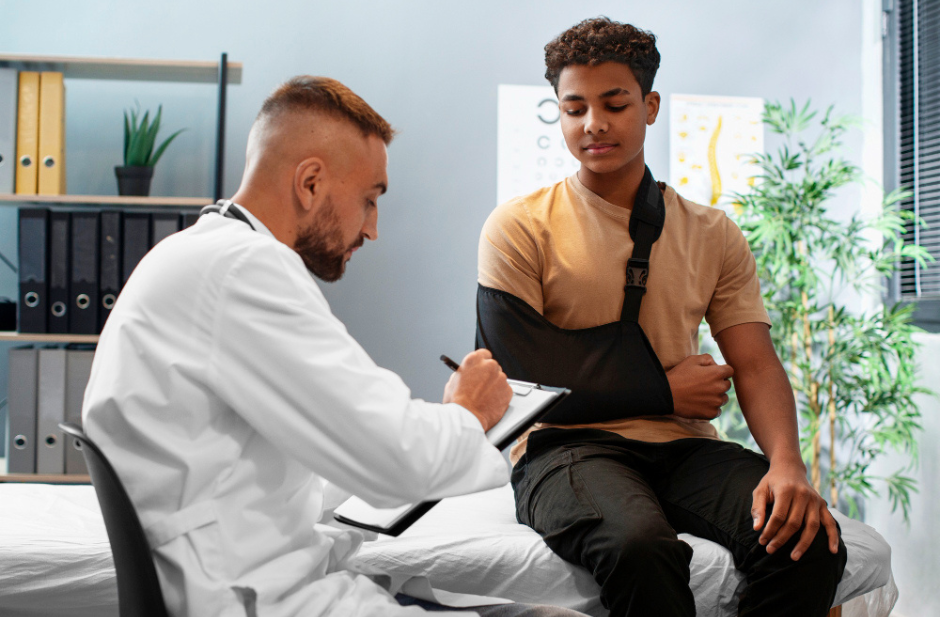Illinois is home to bustling urban centers and quiet suburban communities. Chicago, Aurora, Naperville, Rockford, and Springfield, each with its own traffic patterns, workplaces, and daily risks.
In 2023, Illinois recorded more than 101,000 nonfatal workplace injuries and over 800 fatal motor vehicle crashes, showing how often accidents impact residents across the state.
These incidents don’t just occur in big cities; smaller communities face similar dangers on their roads and job sites, underscoring the widespread need for strong legal support.
When someone is harmed in an accident or through another’s negligence, the key to achieving justice often lies in the strength of the evidence brought forward.
That’s where a respected legal group at Shore Injury Law comes into play; they understand how to gather and present the specific evidence that really matters.
Legal professionals help injury victims across Illinois and the country protect their rights and rebuild their lives. So, if you are wondering what type of personal injury evidence lawyers rely on? I have got you covered.
In this article, I am going to explore the diverse aspects of personal injury evidence, highlighting what you need to collect and present in court.
So, keep reading to know more!
Types Of Personal Injury Evidence
Not all documents can be used as evidence in personal injury cases. So, here are the types of documents that are mainly used for proving a personal injury case.
1. Medical Records And Documentation
One of the most important documents for a personal injury case is the medical reports and test analysis. These medical records help in proving the main cause behind the personal injury.
Moreover, the medical reports give details about the treatment plans, the expenses, future treatment requirements, and the estimated recovery time.
In addition to this, the records keep the diagnostic results, test analysis, and even the hospital discharge summaries. Making it easier to keep track of the medical expenses for personal injuries.
So, it provides comprehensive details about the personal injury. That is, lawyers can use these medical records to establish the relationship between the incident and the resulting injuries.
Moreover, the insurance companies use these medical records to determine the severity of the injuries to decide the compensation claim. So, the victims get maximum compensation for their loss.
2. Accident Reports And Official Statements
Apart from the medical records, keeping a record of the actual accident reports and official statements is vital for fighting the case.
That is, the official documentation of the accident or the event from the police records should be collected. This helps substantiate the case filed by the victim.
Moreover, the personal injury lawyers can analyze the details from the records to establish the cause of the accident. So, it is easier to prove how the injury occurred.
3. Photographic And Video Evidence
Essential elements can get lost in translation when it comes to words, and visuals in legal representations bring undeniable clarity to the evidence, such as photographs of vehicle damage, accident details, and even your injuries.
Surveillance cameras or even cell phones can capture video that may show what happened leading up to, during, or after the event.
These graphics typically help clarify areas of confusion and support your written statements. During settlement negotiations or at trial, clear images can help convince insurers or juries.
4. Eyewitness Testimonies
Eyewitnesses are those witnesses to the case who provide critical perspectives during the process. Their testimonies can either support or contradict accounts provided by eyewitnesses.
Statements from bystanders, coworkers, or passersby may clarify disputed facts. Lawyers typically interview multiple people and seek consistency in their accounts.
When the testimony of independent witnesses aligns with other documentary evidence, it can tip the balance in favor of a client.
5. Expert Opinions And Analysis
Specialists, such as crash reconstruction experts or medical professionals, lend authority to a case. They provide clarity on technical matters that can be unclear to a jury.
These professionals can clarify how an injury likely occurred or demonstrate how a person’s life may be affected for years to come.
The reports and testimony receive heavy consideration during negotiations. Judges and insurance adjusters often utilize this expert analysis to help them find answers.
6. Employment And Income Records
Financial losses are among the most critical aspects of many claims. A case is bolstered by evidence of lost workdays, lower earnings, or lost job opportunities.
To demonstrate the financial impact of the accident, attorneys gather pay stubs, tax returns, and statements from employers to substantiate the claim.
These papers aid in calculating damages resulting from lost wages or loss of earning capacity.
7. Correspondence And Communication Records
Communication with insurance companies, medical providers, or other parties should be kept in files.
Communication consistency is vital; letters, emails, and logs of phone calls document attempts to obtain care or lodge claims.
This series of communications outlines the actions that have taken place since the incident.
Good documentation can prevent and clarify arguments over delays, denials, or other misunderstandings, thereby enhancing transparency and clarity.
Maintaining a record of everything leaves the client in a stronger position throughout the entire process.
8. Physical Evidence
Tangible items from the scene, such as damaged clothing, broken equipment, or shattered parts, can tell a compelling story. Physical objects help establish what happened and why.
Lawyers sometimes present these items in court to reinforce their arguments.
The condition of these objects often supports other forms of proof, such as photographs or official reports. Proper preservation of physical items is essential for their usefulness.
Collecting The Right Type Of Personal Injury Evidence
Having strong evidence makes a significant difference in cases of personal injury.
Despite the various types of evidence, lawyers construct compelling arguments from the evidence to achieve fair outcomes for their clients.
Every piece of evidence, from medical records to expert opinions, confirms the client’s version of events. Moreover, when the preparation and documentation of the ambush are correct, the outcome should be suitable.
Personal injury attorneys who work to obtain credible records play a vital role in ensuring that parties who have been harmed can gain justice.















